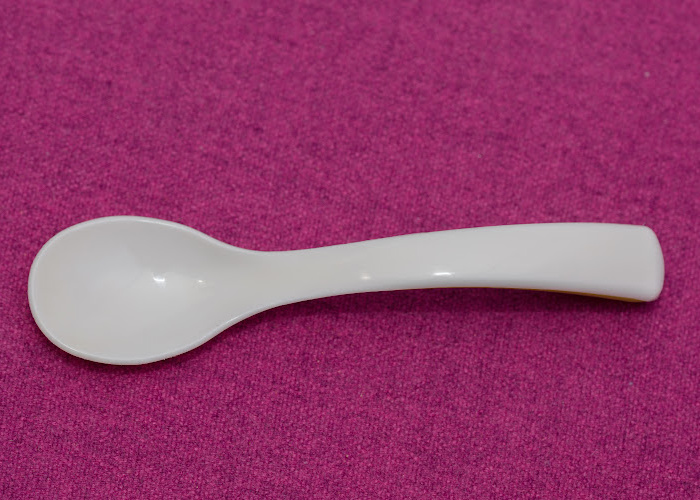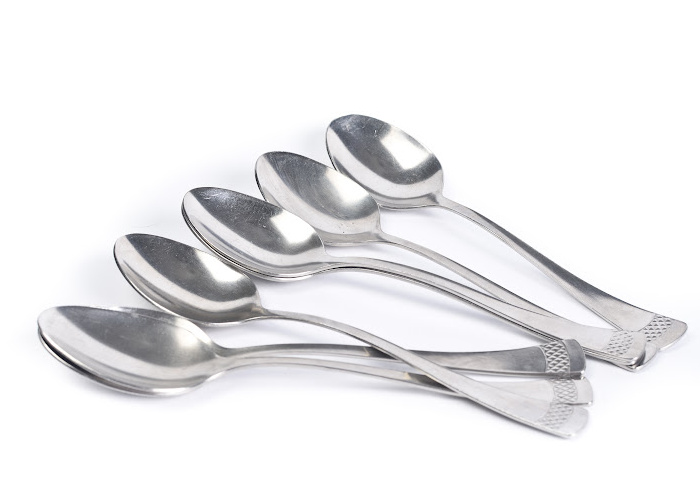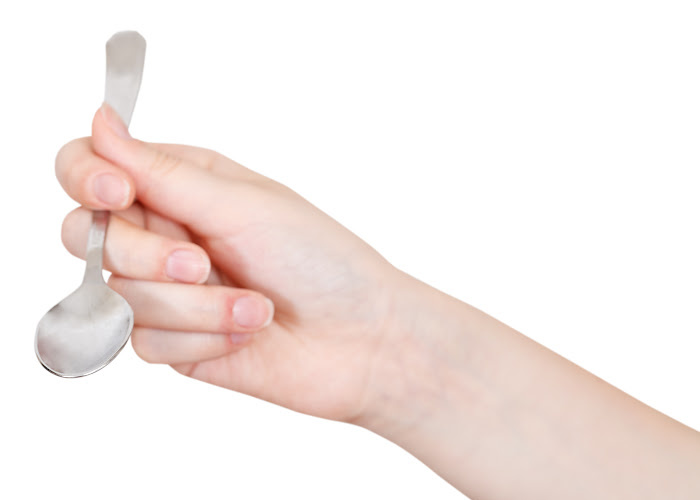It's crucial to know that students with autism and ADHD need special study strategies. Autism…

Why do Autistic People Like Small Spoons? It’s All About Sensory
Delving into the sensory preferences of autistic people reveals unique considerations that many might overlook, such as the autistic individuals’ affinity for small spoons. The question of why do autistic people like small spoons goes beyond a simple matter of preference it’s intricately connected to the sensory experiences that define autism. The tactile feedback from the size and shape of utensils, particularly spoons, can significantly influence comfort levels and eating experiences.
Within the scope of small spoons and autism, a smaller utensil presents a less intense encounter with tactile stimuli, which is a common sensitivity among autistic people. The understated impact of a small spoon’s gentle touch can make a world of difference in creating a more agreeable and less distressing mealtime ritual. It is these sensory preferences of autistic people that drive the design and selection of cutlery that accommodates their specific needs, reinforcing the value of understanding and catering to individual sensory profiles.

The Sensory Experience of Eating with Utensils
When it comes to mealtime, individuals on the autism spectrum may have specific preferences that cater to their heightened sensory perceptions. The reasons behind autistic individuals’ affinity for small spoons become clear when understanding the connection between autism and small spoons. For those with autism, the utensils used during a meal are not just tools for eating but are integral to their sensory experience and can impact their overall comfort and well-being.
Eating: A Multisensory Interaction
Eating is far more than just the act of nourishment; it entails a complex, multisensory interaction that engages all five senses. The appeal of small spoons for people with autism often originates from the need to reduce sensory input that can become overwhelming. Smaller utensils align with the diner’s need for a pleasant tactile sensation, visual appeal, and manageability, contributing to a more enjoyable eating experience.
Tactile Sensitivity and Metal Utensils
Many autistic individuals experience a heightened sense of touch, which can transform the feel of cold, hard metal utensils from a neutral sensation to one of extreme discomfort. Metal spoons, with their larger size and reflective surfaces, can not only cause unpleasant tactile feedback but also glares that disturb the eye. Many parents and caregivers are recognizing this as a legitimate concern and are exploring alternatives to traditional silverware to accommodate their loved ones’ sensitivities.
Why Smaller Spoons Can Be Soothing
The soothing nature of small spoons rests in their minimal contact and gentle presence in the mouth. These utensils provide a discrete solution that minimizes the potential for sensory overload during meals. From a psychological perspective, controlling the environment to include only mild and comfortable sensory inputs, such as through the use of small spoons, can be incredibly reassuring and calming for an autistic individual.
Understanding the unique preferences of autistic individuals is essential to supporting their needs and creating inclusive, sensory-friendly environments. The subtle yet significant impact of using small spoons is a reflection of the thoughtful accommodations that can make a world of difference for those on the autism spectrum.

Other Benefits of Small Spoons for Autistic People
While exploring the fascination of autistic individuals with small utensils, it’s evident that beyond sensory considerations, small spoons for autistic individuals serve multiple practical purposes. These benefits extend into various aspects of daily life, transforming a simple utensil into a supportive tool for many with autism.
Enhanced Motor Control: The lightweight design and shorter handles of small spoons naturally support finer motor control. This is particularly beneficial for those on the autism spectrum who may find handling standard-sized utensils challenging. Smaller utensils can contribute to enhancing independence at mealtimes and foster a sense of achievement.
Portion Control: Autistic individuals and their liking for small utensils also link to the concept of portion control. The reduced size of small spoons naturally encourages moderate bite sizes, which can be crucial for those who may struggle with eating too quickly or difficulty in self-regulation during meals.
Minimizing Mess: Mealtimes can often be disorganized, resulting in unnecessary stress for autistic individuals. The shorter handle and smaller scoop area of a small spoon reduce the chances of spills and messes, making the dining experience cleaner and less overwhelming.
Calming Influence: The tactile feedback from a small spoon is diminished compared to larger utensils, which can produce a calming effect. For some autistic people, the gentle contact of a small spoon can significantly reduce mealtime anxiety.
Recognizing the unique preferences of autistic individuals when it comes to cutlery is a step towards inclusivity and understanding. Small utensils are more than a preference they are a practical aid for those with sensory sensitivities, motor challenges, and a need for a structured and tranquil dining experience.

Why do Autistic People Like Small Spoons?
The question of spoon size preferences in autism isn’t just about comfort; it speaks volumes to the importance of sensory inclusivity in autism. The preference for small spoons among autistic individuals is deeply rooted in the sensory benefits these utensils offer. However, the advantages don’t end there small spoons also provide essential support for motor control and coordination, help manage eating pace and bite size, and reduce mealtime overwhelm. With ongoing cultural shifts in understanding autism, such utensils are now recognized for what they truly represent: reasonable accommodations within a spectrum-friendly approach to daily life.
Supporting Motor Control and Coordination
Motor control and coordination can be challenging for some autistic individuals. Smaller utensils like spoons provide a manageable tool for those who struggle with the unwieldy nature of larger, standard cutlery. The lightness and ease of handling of small spoons allow for finer movements, enhancing the diner’s autonomy and skill during meals. Through this simple adaptation, the act of eating becomes less taxing and more inclusive, ensuring that everyone, regardless of their motor abilities, can enjoy their meal with dignity.
Managing Eating Pace and Bite Size
Equally pivotal is the way spoon size preferences in autism influence the regulation of eating pace and the moderation of bite sizes. Smaller spoons naturally prompt smaller bites, which can drastically improve the dining experience for those who may eat too quickly or find it difficult to judge appropriate bite sizes. This not only makes chewing and swallowing more manageable but also fosters a more mindful and less overwhelming approach to eating one that can be crucial for autistic individuals navigating sensory-rich environments.
Reducing Mealtime Overwhelm
Part of the culinary challenge is finding ways to reduce mealtime overwhelm a common issue for many on the autism spectrum. Small spoons can play a significant role in creating a stress-free dining environment. By decreasing spills and allowing for more control over how food is consumed, these utensils help diminish the potential for sensory overload. The result is a calmer, more structured experience that can mitigate anxiety and contribute to overall meal satisfaction. As society continues to learn about and advocate for the importance of sensory inclusivity in autism, providing small spoons becomes an essential practice in responsiveness to diverse needs.
FAQs
What are the sensory preferences of autistic people when it comes to utensils?
Autistic individuals may have sensory sensitivities that make the tactile sensations of certain utensils intense or intolerable. Preferences often include smaller spoons, which provide reduced contact area and gentler edges for a more comfortable experience.
How does eating become a multisensory interaction for autistic individuals?
For autistic individuals, eating is a multisensory experience that includes taste, smell, sight, and touch. The tactile feedback from metal utensils can sometimes cause discomfort, and smaller spoons can minimize this while also aiding those with limited fine motor skills.
Why are smaller spoons soothing for some autistic people?
Smaller spoons can be soothing because they support better motor control with their lightweight design and short handles, help with portion control, and reduce mess during mealtime, providing a calming effect for those who find mealtimes challenging.
Aside from sensory reasons, why else might autistic individuals like small utensils?
Beyond sensory benefits, small utensils offer enhanced control and coordination during eating, helping people with autism to moderate bite sizes and eating pace, which can prevent overeating and contribute to a more manageable dining experience.
How do small spoons support motor control and coordination?
Small spoons aid motor control and coordination by being easier to handle due to their size and weight. This can be particularly helpful for those with autism who may struggle with fine motor skills.
Can small spoons help manage eating pace and bite size for autistic individuals?
Yes, small spoons can help moderate the amount of food that is eaten with each bite, which aids in managing the eating pace and can be especially beneficial for autistic individuals who may need to take smaller bites for sensory or motor reasons.
In what ways do small spoons reduce mealtime overwhelm for autistic people?
Small spoons can reduce mealtime overwhelm by limiting the sensory input from larger, heavier utensils, and by making it easier to control the amount of food consumed in each bite, which can help prevent choking hazards and the feeling of being overwhelmed by too much food at once.



This Post Has 0 Comments